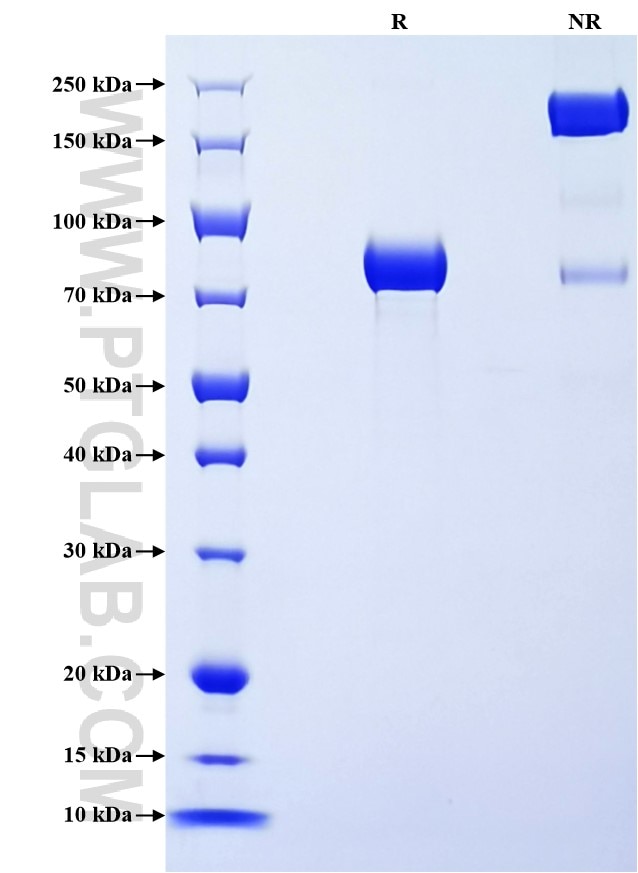Recombinant Human NPRC/NPR3 protein (rFc Tag)
Species
Human
Purity
>90 %, SDS-PAGE
Tag
rFc Tag
Activity
not tested
Cat no : Eg2988
Validation Data Gallery
Product Information
| Purity | >90 %, SDS-PAGE |
| Endotoxin | <0.1 EU/μg protein, LAL method |
| Activity |
Not tested |
| Expression | HEK293-derived Human NPRC protein Gly27-GLu481 (Accession# P17342-1) with a rabbit IgG Fc tag at the C-terminus. |
| GeneID | 4883 |
| Accession | P17342-1 |
| PredictedSize | 76.4 kDa |
| SDS-PAGE | 76-85 kDa, reducing (R) conditions |
| Formulation | Lyophilized from 0.22 μm filtered solution in PBS, pH 7.4. Normally 5% trehalose and 5% mannitol are added as protectants before lyophilization. |
| Reconstitution | Briefly centrifuge the tube before opening. Reconstitute at 0.1-0.5 mg/mL in sterile water. |
| Storage Conditions |
It is recommended that the protein be aliquoted for optimal storage. Avoid repeated freeze-thaw cycles.
|
| Shipping | The product is shipped at ambient temperature. Upon receipt, store it immediately at the recommended temperature. |
Background
NPR3 (Natriuretic Peptide Receptor 3) is a widely expressed natriuretic peptide receptor that mediates natriuretic peptide degradation and plays a role in the regulation of endochondral ossification and bone growth, as well as acting as a tumor suppressor or promoter in some types of cancers. NPR3 may function differently in different types of cancers, and the up-regulation of NPR3 upregulation of NPR3 promotes the proliferation of colorectal cancer cells, and knockdown promotes the metastasis of clear cell renal cell carcinoma. It has been suggested that NPR3 may act as a new tumor suppressor by blocking the PI3K/AKT pathway and is regulated by POU2F1 transcription.
References:
1. Li S. et al. (2021) Cell Signal. 86:110074. 2. Devotta A. et al. (2023) Elife. 12:e84036. 3. Dabaghie D. et al. (2024) Sci Rep. 14(1):11850.
